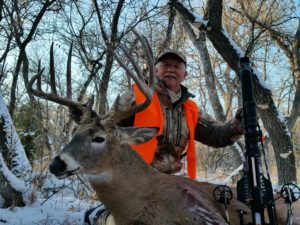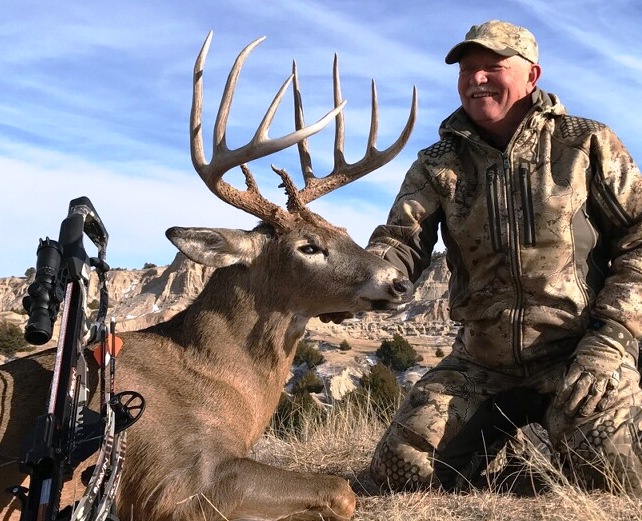Firearm hunters often choose to maximize the capability of their rifle or slug gun by seeking out places with the longest shooting range, typically tree stands that overlook easement right-of-ways, clearcuts, or browsed-out wood lots. For the past four years, I’ve used a crossbow in firearm season and been successful three times (one miss) in exactly the opposite scenario. Where as my center-fire toting buddies seek out the big wide open spaces, I’m a stickler for “the big thick,” cedars in particular. I first observed this deer behavior in a drive that became an annual occurrence and noticed that the riverbottom hide-away we pushed often teamed with antlers, yet the crafty creatures worked their way back through the drive and rarely fell to a gunshot. “What if I hid in the center of those thickets with my bow?” I wondered and after working out safety measures had a 130-class buck take an arrow through the ribs at 15 yards and a second larger whitetail pass by and escape, as usual.

Hunting in thick cover has its challenges, especially for an archer. First, camouflage is really important. This fall, I used the new Pnuma pattern and had excellent success, even when sitting against a tree. My first morning out, I grunted a very tempting 9-point to 10 yards and the deer searched for that grunting rival for nearly five minutes. I wore hunter orange, the local requirement, got a few glances, yet the deer eventually just moved on. In snow cover, my reversible ScentBlocker jacket in a winter Realtree pattern has been amazing, to the point that I felt invisible. Aside from camouflage, shooting distance is important. I didn’t have a potable tree stand on my last hunt, so I gave considerable time to finding the best shooting lane, one that allowed up to 40 yards of limb-less access. Finally, many bucks seek out these thick areas to make scrapes, rubs, and locate does which makes them more responsive to rattling, grunting and bleating. Bucks seldom approach a call if they can clearly see that no deer is in sight, yet in dense areas, they often step within bow range searching for a rival. Once a buck commits toward your location, be silent and let him work into the best shooting position. You don’t want that ultra-alert animal to pinpoint your position.









![The Best Deer Camp Chili [VIDEO] Deer Chili Ingredients, Tomatoes, Chili Spices](/wp-content/uploads/2015/10/Deer-Chili-Deer-Camp-Recipe-218x150.jpg)








![How to Call Elk Early in the Season [VIDEO]](/wp-content/uploads/2016/08/byers003-218x150.jpg)




![Idiots Disturb Hunter: How Would You Have Handled It? [VIDEO]](/wp-content/uploads/2015/10/DSC00110-e1474487693878-100x70.jpg)
![Albino Buck Shocked to Shed His Antlers [VIDEO]](/wp-content/uploads/2015/10/AlbinoDeer-100x70.jpg)